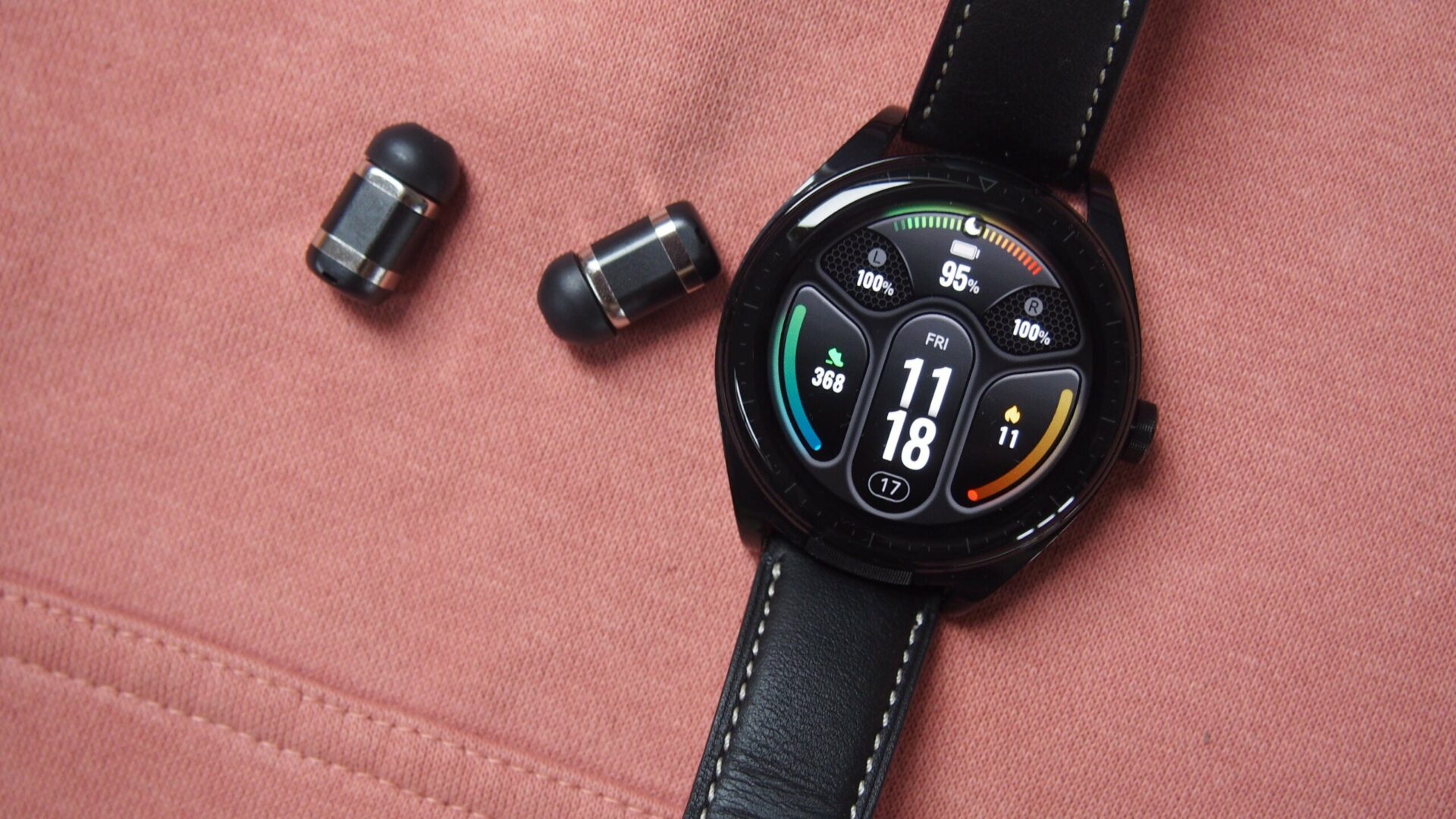What Wrist Should You Wear Your Watch On

Wearing a watch is a great way to accessorize your look and add an element of style to your outfit. But have you ever wondered which wrist should you wear your watch on? Some people may just put their watch on whichever wrist feels more comfortable, but there can be more to it than that. This article will explore the different factors to consider when deciding which wrist to wear your watch on.Wearing a watch on either the left or right wrist offers several benefits. On the left wrist, wearing a watch is a sign of good etiquette and respect for others. Since this is typically the hand used to shake hands with another person, having a watch on this wrist shows that you are aware of the time and respect the other person’s time as well. On the right wrist, wearing a watch is more practical because it allows easy access to check the time without having to move your hand away from whatever task you are performing. Additionally, wearing a watch on either wrist can help remind you of important tasks or events that you may have scheduled for that day.
How to Determine Your Preferred Watch-Wearing Hand
Wearing a watch is a classic way to accessorize your look and complete an outfit. It is also a practical way to keep track of time and be punctual. But deciding which hand to wear it on can be tricky. The traditional rule of thumb is that the watch should be worn on the non-dominant hand. This means that if you are right-handed, you should wear your watch on your left wrist, and if you are left-handed, you should wear it on your right wrist. However, this isn’t always the case and ultimately comes down to personal preference and comfort.
The best way to determine which hand you prefer for wearing a watch is by trying it out both ways. The first step is to put the watch on your non-dominant hand and go about your day as usual. Notice how the weight of the watch feels in relation to how much movement that hand makes throughout the day. Be sure to pay attention to any discomfort or irritation that may arise due to having something strapped around your wrist all day.
The next step is to switch it up by wearing it on your dominant hand for a few days. Once again, observe how the weight of the watch feels in relation to how much movement that arm makes throughout a typical day. Also take note of any discomfort or irritation caused by wearing it on this side instead of the other one.
Once you have tested both ways, compare each experience side by side and decide which one felt more comfortable and natural for everyday use. If you still can’t decide between them, try alternating between each hand depending on what type of activity or occasion you are participating in throughout the day. Finding out which hand suits you best for wearing a watch may take some trial and error but in the end, it will be worth it for ultimate comfort and convenience!
Which Wrist Should You Wear Your Watch On?
Traditionally, watches are worn on the left wrist. This is considered to be the correct way to wear a watch, as it is seen as an extension of your hand and it should be close to your heart. However, this isn’t necessarily the only way to wear a watch. Some people prefer to wear their watch on their right wrist, and there are several valid reasons for doing so.
One reason why someone might choose to wear their watch on their right wrist is because they are right-handed. If you are right-handed, then wearing your watch on the left wrist can be uncomfortable or even inconvenient. It can get in the way when you’re trying to write or do other tasks with your dominant hand. Wearing it on the right wrist makes more sense if you’re right-handed as it won’t get in the way and will still allow you to check the time easily.
Another reason why someone might choose to wear their watch on their right wrist is because of fashion or personal preference. Many people feel that wearing a watch on their left wrist doesn’t look as stylish or fashionable as wearing it on their right wrist does. Furthermore, some people simply prefer the look of a watch on one particular wrist over another – so if you have a strong preference for one side over another then go ahead and wear it there!
Ultimately, which wrist you choose to wear your watch on is entirely up to you – there’s no hard and fast rule about which side is “correct”. The important thing is that you feel comfortable and confident in how you’re wearing it, no matter which side it’s placed on!
Does It Matter if I Wear my Watch on My Right or Left Hand?
Wearing a watch can be both a fashion statement and a practical necessity. Many people enjoy wearing watches to keep track of time, while others might simply prefer the look of wearing a watch. While it is generally accepted that watches should be worn on either the left or right wrist, there is no definitive answer as to which is the correct hand to wear your watch on.
The position of your watch ultimately depends on whether you are left-handed or right-handed. If you are right-handed, then it is typically considered more appropriate to wear your watch on your left wrist. This allows you to easily access the buttons and dials with your right hand without having to adjust the position of your watch. However, it is also possible to wear your watch on your right wrist if you are right-handed.
For those who are left-handed, wearing a watch on their right wrist is considered more traditional and appropriate. This allows them to access the buttons and dials easily with their left hand without having to adjust the position of their watch. However, it is also possible for left-handed individuals to wear their watch on their left wrist if they so choose.
No matter which hand you choose to wear your watch on, it is important that you select a comfortable fit that will not cause any irritation when worn for extended periods of time. If you find that one option does not feel comfortable or does not suit your needs, then you may want to consider switching hands or trying another style of watch altogether.
At the end of the day, there really isn’t a wrong answer when it comes to deciding whether or not you should wear your watch on either hand – it all comes down to personal preference and comfort level. As long as you find one that feels comfortable and suits your needs, then there’s no need to worry about whether it’s being worn on the proper hand or not!
Should I Wear My Watch on My Left or Right Hand According to Etiquette?
When it comes to etiquette, there is no hard and fast rule as to which hand you should wear your watch on. It is generally accepted that men should wear their watch on the left hand, while women should wear theirs on the right. This is thought to be because men are traditionally right-handed, so having their watch on their left wrist allows them more freedom of movement when they are using their right hand.
However, this rule is not set in stone and many people choose to wear their watches on whichever hand feels most comfortable for them. Some people may prefer to have their watch on their dominant hand so that they can easily read the time without having to move it around. Others may prefer the look of a particular watch or bracelet on one side or the other and choose based on style rather than tradition.
Ultimately, wearing your watch on either side will not mark you out as particularly rude or impolite and it really boils down to personal preference. If you are unsure which looks better with your outfit, try both and see which looks better on you. As long as you keep your watch well maintained and in good condition, it doesn’t really matter which hand you choose!

Is There a Correct Way to Wear a Watch?
Wearing a watch can be an important part of your everyday wardrobe, but it can also be a bit confusing when it comes to the “right” way to wear one. While there is no one definitive answer, there are some tips and guidelines that can help you find the best way to wear your watch.
The first step in finding the right way to wear your watch is understanding wrist size and shape. Wrist sizes vary from person to person, so it’s important to take into account both the length and width when selecting a watch style. If you have a small wrist, you may want to opt for a smaller sized watch. If you have a larger wrist, then you may want to choose one with a wider band or larger face.
The second step in finding the right way to wear your watch is determining how tight or loose it should fit on your wrist. Generally speaking, it should fit snugly but not too tightly. If your watch is too loose, it can easily slide off or get caught on things; if it’s too tight, then it can be uncomfortable and even restrict circulation in some cases. Finding the right fit requires some trial and error as well as paying close attention to how comfortable it feels on your wrist.
Finally, think about where you want the face of the watch to sit on your wrist. The most common place for watches is at the base of the palm near where your hand meets your arm; however, this isn’t necessarily the only place you can wear them. Some people prefer their watches higher up on their wrists for easier visibility while others like them lower down for added comfort and stability. Experiment with different placements until you find what works best for you.
Ultimately, there is no “correct” way to wear a watch as everyone has different preferences and needs when it comes to accessories like this. However, by following these tips and guidelines, you can find what works best for you and ensure that your watch looks great!
Does Hand Preference Influence Which Wrist We Should Wear Our Watches On?
The notion that left-handed people should wear watches on their right wrist and right-handed people should wear watches on their left wrist is a common one. However, this is not necessarily true. The idea actually dates back to the early days of watchmaking when the winding stem, the part used to set the time, was located on the right side of the watch. This meant that right-handed people had an easier time winding their watches and adjusting the time than left-handed people did.
Today, with modern watchmaking advances, winding stems are often located on both sides of the watch or even at the top of some models. This means that either hand can be used to wind and adjust a watch’s time without any difficulty. Therefore, hand preference does not necessarily influence which wrist one should wear a watch on.
That being said, there are still some benefits to wearing your watch on your non-dominant wrist if you are a lefty or a righty. For example, if you are left-handed and you wear your watch on your left wrist, it will be easier for you to glance at it without having to move your arm away from whatever task you are doing with your dominant hand. Similarly, if you are right-handed and you wear your watch on your right wrist, it will be easier for you to glance at it without having to move away from whatever task you are doing with your dominant hand.
Ultimately, when deciding which wrist to wear your watch on, it really comes down to personal preference. If you feel more comfortable wearing it on one side than the other then go ahead and do so! There is no hard and fast rule as to which wrist should be used – just go with what feels best for you!
The History of Wearing Watches on Different Wrists
The practice of wearing watches on different wrists dates back centuries. Historically, men wore watches on the left wrist while women wore them on the right wrist. This was due to the way that most people are right-handed, and it was thought that a watch would be less likely to be damaged if it was placed on the opposite hand.
In the early 1900s, technological advancements allowed for more complex watch designs, which led to an increase in popularity for wearing watches as a fashion accessory. As a result, watches started being worn regardless of gender or handedness.
In modern times, wearing a watch on either wrist has become commonplace and is largely dependent on personal preference. Many people prefer to wear their watch on their non-dominant hand so that they can easily check the time without having to switch hands. Others prefer to wear their watch on their dominant hand so that they can accessorize it with other pieces of jewelry or show it off as part of an outfit.
In some countries and cultures, there are still traditional rules about which wrist a watch should be worn on depending upon one’s gender or handedness. For example, in Japan it is customary for men to wear watches on their left wrists and for women to wear them on their right wrists. In India, men often wear watches on their right wrists and women tend to prefer wearing them on their left wrists.
No matter which wrist you choose to wear your watch on, it is important to take into consideration how easy it is for you to access your timepiece with just one hand. Wearing a watch should be comfortable and convenient – not a chore!

Conclusion
When it comes to deciding which wrist to wear your watch on, it ultimately comes down to personal preference. While there are some traditional rules about wearing watches on the left wrist, there is no hard and fast rule. Ultimately, the best option is whatever feels most comfortable and natural to you. It is worth considering the practical implications of wearing a watch on each wrist before making a decision. Wearing a watch on the dominant hand may make it easier to access and use, but can also lead to strain and fatigue in that hand.
It is also important to consider the aesthetic implications of where you wear your watch. Depending on the style of your watch and your outfit, wearing a watch on one hand or another may create a more balanced effect or draw attention in certain ways. Ultimately, what matters most is that you feel comfortable and confident with your choice!
No matter which wrist you decide to wear your watch on, make sure that you are taking proper care of it. Regularly cleaning and caring for your timepiece will ensure that it looks great no matter where you wear it!
